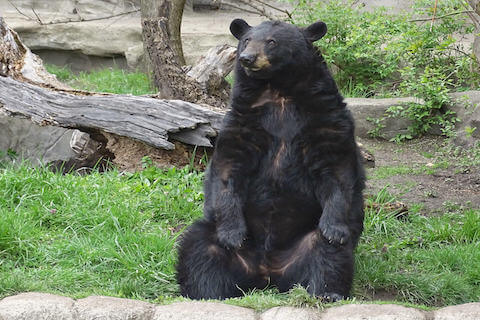A study led by Zoe Johnson-Ulrich and Jennifer Vonk from the Department of Psychology at Oakland University indicates that American black bears may be able to recognize that images presented on a computer screen correspond to real life objects.
Their findings come after working with a black bear named Migwan at the Detroit Zoological Society and are now published in the journal Animal Cognition.
The study forms part of a broader research project into the welfare of bears in captivity. It aims to find out how the animals themselves rate the environment in which they are held, and the facilities, food and features provided to them.
In this study, Migwan, a black bear born in the wild, but injured and subsequently rescued at a very young age was the test subject. She had previously received training on an unrelated task using photographs of food items from her normal diet. For this study, she was presented with eight objects new to her and her ability transfer what she had learned about photos to their corresponding objects, and vice versa, was assessed.
This ability to perceived the correspondence between images and the objects that they represent has been previously researched in hens, rhesus monkeys, gorillas, pigeons, tortoises, and horses.
“Bears can transfer learning with real objects to photographs of those objects presented on computer screens,” says Johnson-Ulrich. This means that photographs of items (food, objects, people or other bears) that are familiar to bears can be used to further test their discrimination ability. Johnson-Ulrich therefore believes that the findings have important implications for the use of photographs in computerized studies involving bears, and in ultimately ensuring the welfare of captive bears.
“Because a lot of research with photographic stimuli uses familiar images (e.g. food, conspecifics) this is useful in suggesting that bears’ responses to these photographs may reflect behaviors towards real items,” according to Vonk.
Johnson-Ulrich and Vonk caution that the ability of bears to recognize features of real objects within 2D-images does not necessarily mean they understand the representational nature of photographs. It is also still uncertain how well bears are able to recognize tangible objects which they first saw in a photograph before being introduced to the real thing. Further research using other bears is therefore needed to verify if the animals can transfer information from pictures to objects, too.
If our reporting has informed or inspired you, please consider making a donation. Every contribution, no matter the size, empowers us to continue delivering accurate, engaging, and trustworthy science and medical news. Independent journalism requires time, effort, and resources—your support ensures we can keep uncovering the stories that matter most to you.
Join us in making knowledge accessible and impactful. Thank you for standing with us!

